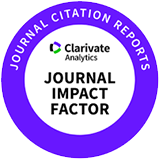Effects of Feeding Mandarin and Poultry By-products on Growth Performance and Physicochemical Properties of Black Soldier Fly (Hermetia illucens) Larvae
Received: Nov 25, 2024 ; Revised: Apr 07, 2025 ; Accepted: Apr 08, 2025
Published Online: Apr 22, 2025
Abstract
Black soldier fly larvae (BSFL) are polyphagous insects, and their growth, nutritional composition, and life cycle are influenced by rearing substrates. This study examined the effects of different rearing substrates on the growth performance, antioxidant activity, and physicochemical properties of BSFL. Mandarin (M) and poultry (P) by-products were mixed at varying ratios (M10P0–M5P5) and used as rearing substrates. Larval length, width, and weight increased with a higher proportion of poultry by-products in the substrate. Notably, the weight of larvae reared on M5P5 was approximately twice that of those reared on M10P0. The highest protein content was observed in M5P5. Antioxidant activities, including 2,2-diphenyl-1-picrylhydrazyl (DPPH) radical scavenging ability, ferric reducing antioxidant power (FRAP), hydroxyl radical scavenging activity, and total phenolic content, were also highest in M5P5. The highest acid value was recorded in M5P5 for unrefined samples and in M6P4 for refined samples. Amino acid content increased with a higher proportion of poultry by-products, whereas unsaturated fatty acid content was highest in M9P1. These findings demonstrate that incorporating animal-based by-products into rearing substrates enhances BSFL growth performance. Moreover, the use of BSFL for waste valorization offers a sustainable approach to resource utilization and waste management.













